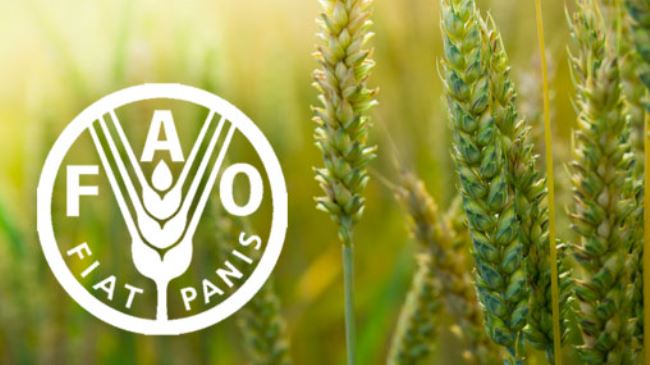By Asmau Ahmad
World food prices declined for the ninth consecutive month in December, though many commodities are still at record highs, the Food and Agriculture Organisation (FAO) has said.
FAO, in its latest Food Price Index (FFPI) published on Friday, stated that the food prices had declined in December following two very volatile years of 2022 and 2021.
The UN agency has published its FFPI which tracks the monthly international prices of cereals, vegetable oil, dairy, meat and sugar.
The FFPI averaged 132.4 points in December, which is one per cent lower than the previous December 2021.
However, it averaged 143.7 points in 2022 – more than 14 per cent higher than the average value over 2021.
“Calmer food commodity prices are welcome after two very volatile years,” FAO Chief Economist Maximo Torero said.
“It is important to remain vigilant and keep a strong focus on mitigating global food insecurity given that world food prices remain at elevated levels, with many staples near record highs, and with prices of rice increasing, and still many risks associated with future supplies,” he added.
The FFPI was “notably higher” in 2022 than in 2021, which on top of large increases that year sparked “significant strains and food security concerns” for poorer food-importing countries, FAO said.
This led the International Monetary Fund (IMF) to adopt a “Food Shock Window”, inspired by the agency.
World prices of wheat and maize reached record highs in 2022 and the average value of vegetable oils hit a new record, while individual indexes for dairy and meat prices also marked their highest full-year levels since 1990.
The lower FFPI in December was led by a decrease in the Vegetable Price Index, which dropped 6.7 per cent from the previous month, reaching its lowest level since February 2021.
“International quotations for palm, soy, rapeseed and sunflower seed oils all declined last month, driven by subdued global import demand and prospects of seasonally rising soy oil production in South America as well as declining crude oil prices,” FAO said.
The Cereal Price Index declined by nearly two per cent over November.
Ongoing harvests in the southern hemisphere boosted wheat supplies for export, while strong competition from Brazil drove down maize prices.
However, rice prices rose, largely bolstered by “Asian buying and currency appreciation against the United States dollar for exporting countries”
December also saw 1.2 per cent downward slide in the Meat Price Index.
“For example, bovine meat prices were affected by “lacklustre demand for medium-term supplies,” FAO said, whereas poultry costs were pushed down due to “more-than-adequate export supplies.”
Meanwhile, pig meat prices increased, largely supported by solid pre-Christmas demand, particularly in Europe.
The Dairy Price Index rose by 1.2 per cent in December, following five consecutive months of declines.
FAO attributed this to higher international cheese prices, reflecting tightening market conditions, though international quotations for butter and milk powder declined.
The Sugar Price Index also jumped 2.4 per cent from November, which was mostly due to concerns over the impact of adverse weather conditions on crop yields in India as well as sugarcane crushing delays in Thailand and Australia.




